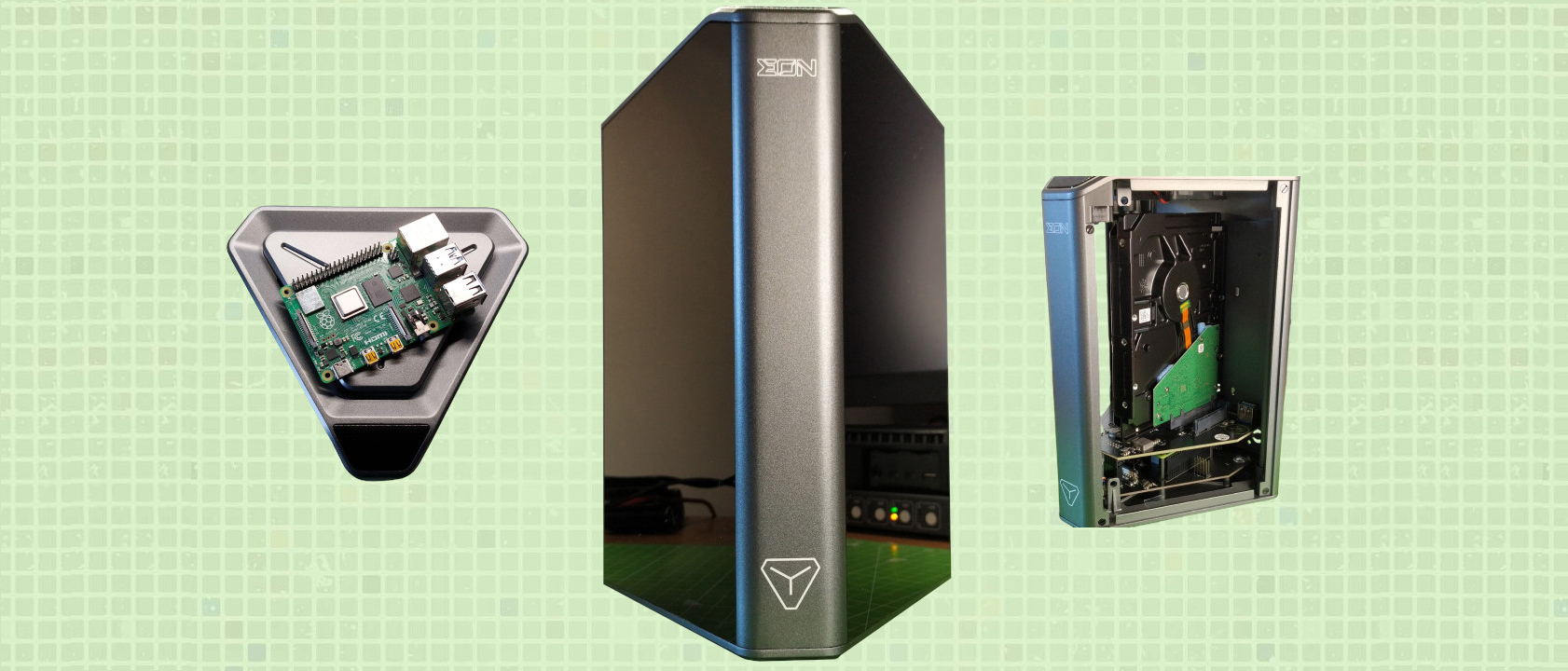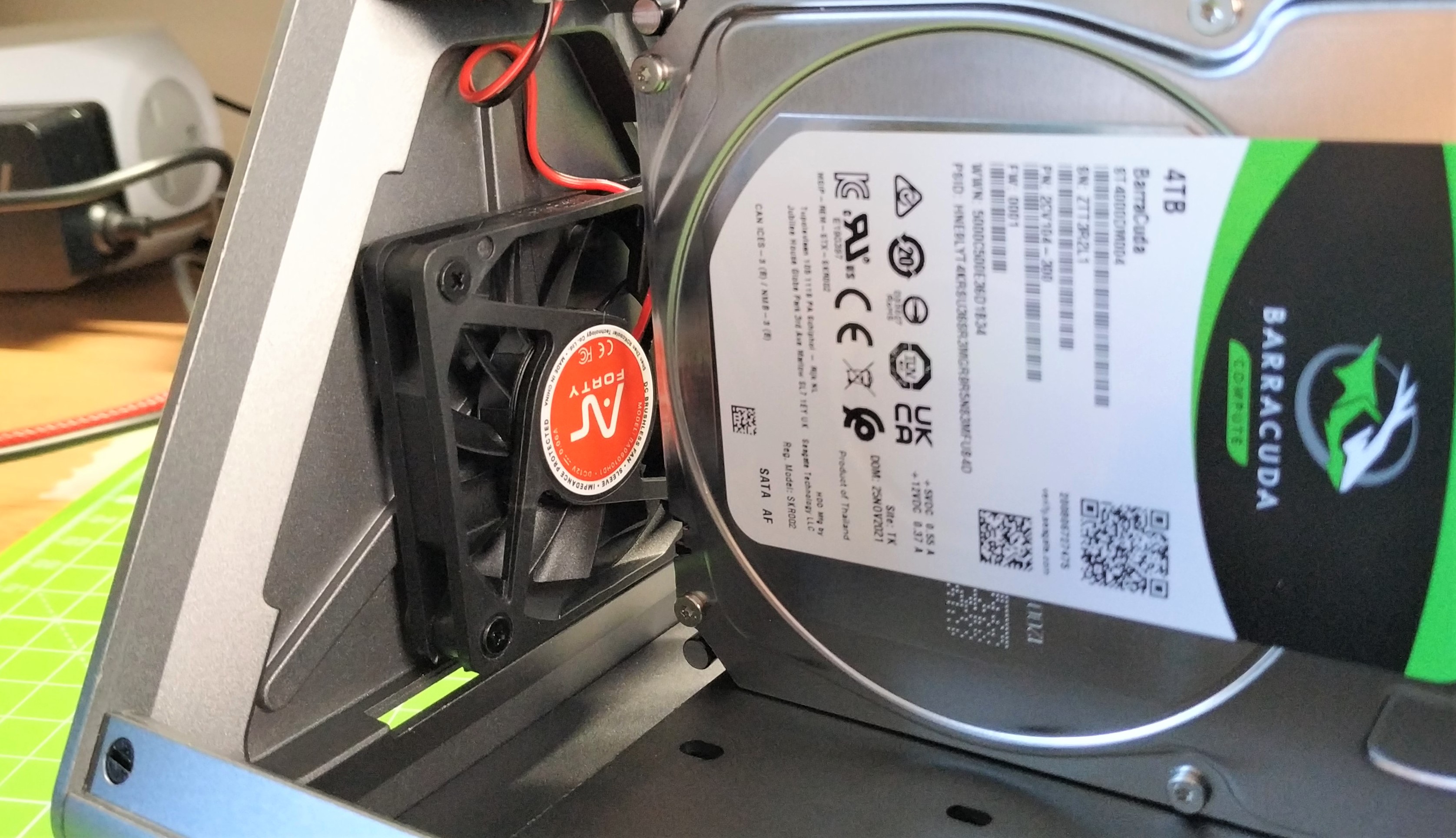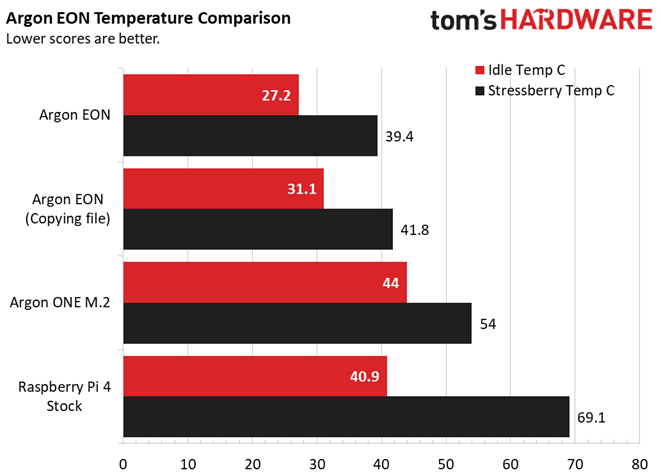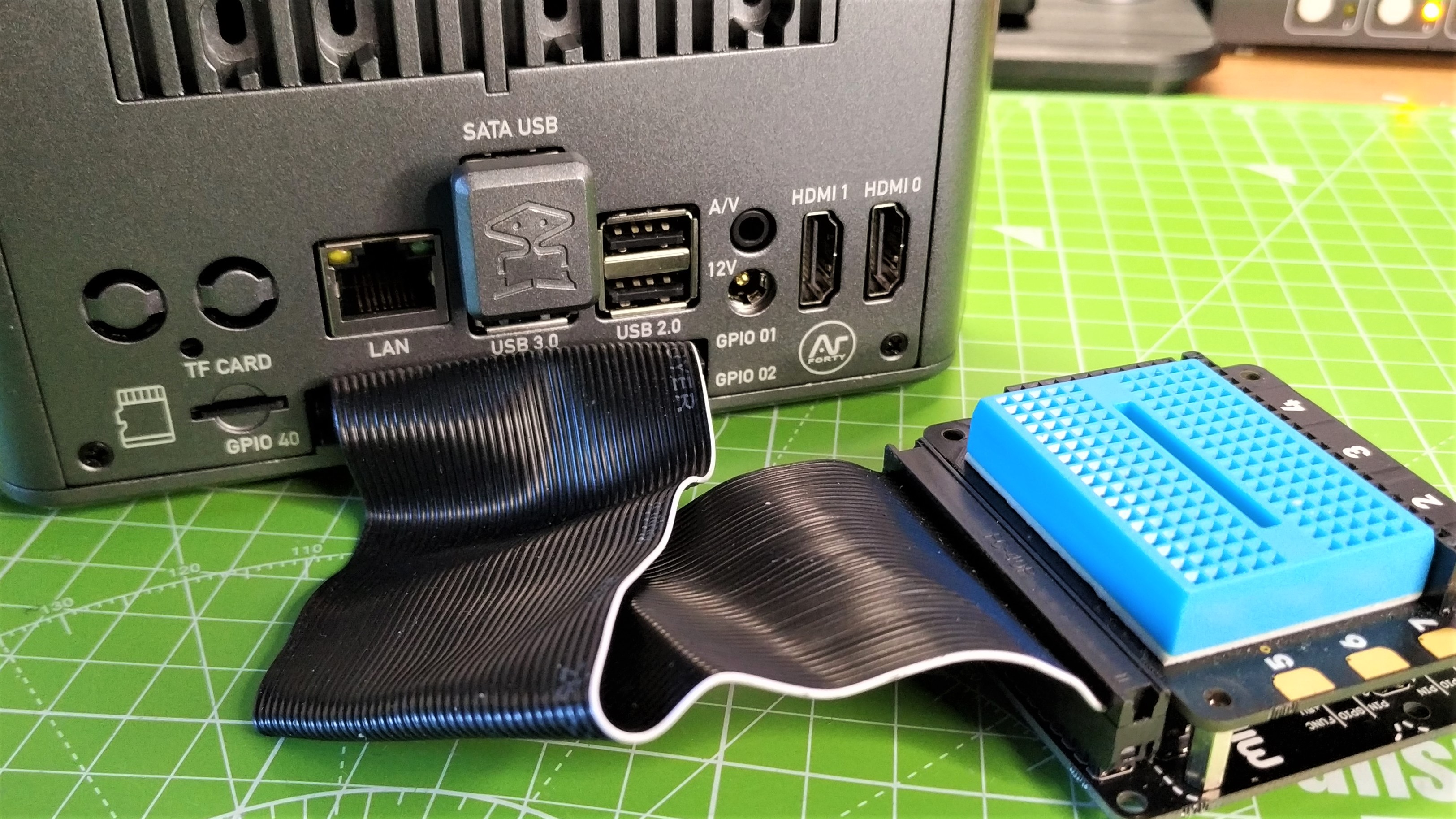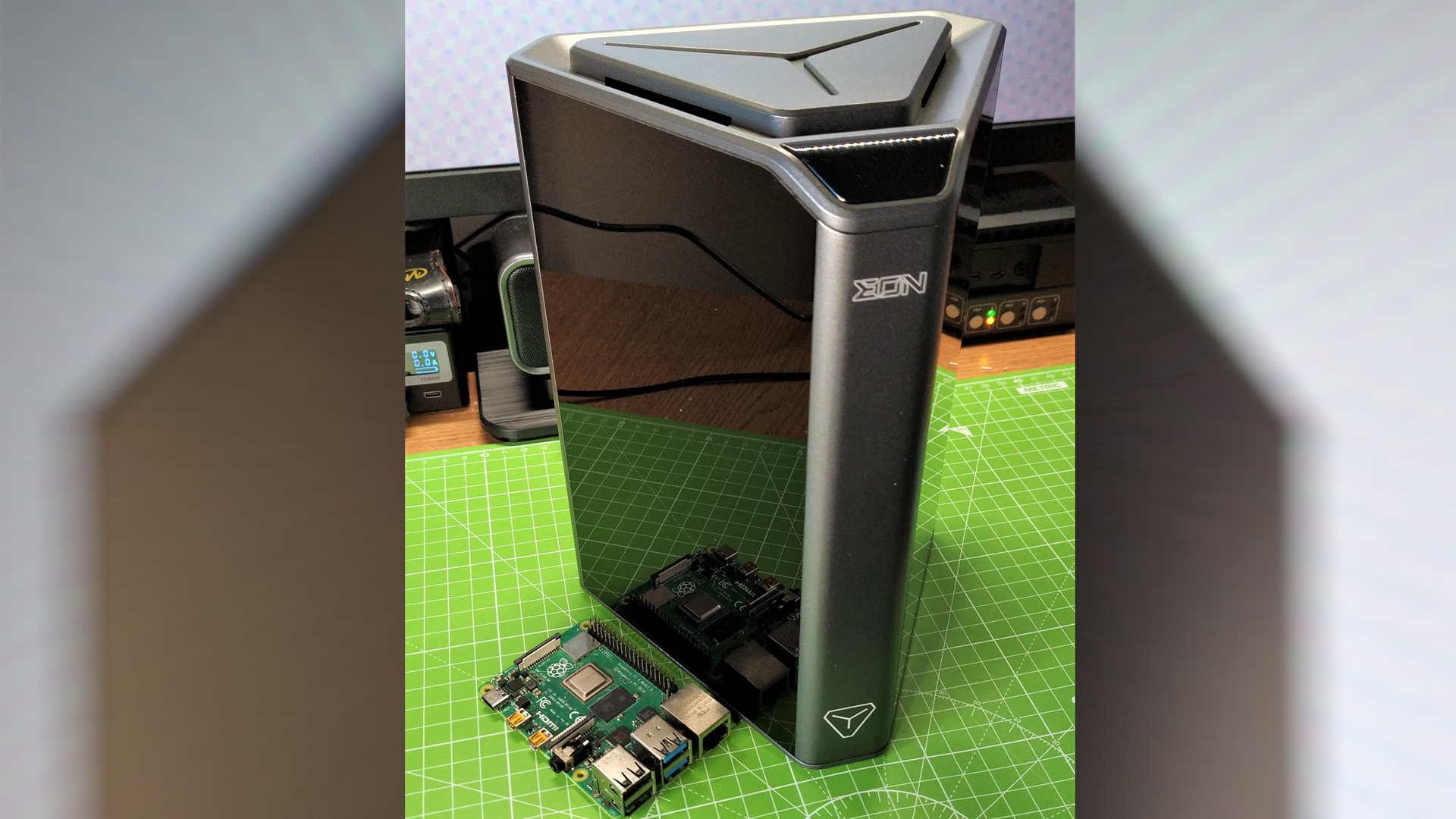Tom's Hardware Verdict
A Solid $150 barebones NAS that is easy to build and all powered by the Raspberry Pi 4.
Pros
- +
+ Excellent build quality
- +
+ Great cooling
- +
+ Space for four drive
- +
+ Easy to build
Cons
- -
GPIO access is not great
Why you can trust Tom's Hardware
Argon Forty loves releasing cases with names that have permutations of the word “ONE.” So far we’ve had the Argon ONE (and M.2), NEO and now we have the EON. But rather than another wedge shaped Raspberry Pi case bound for our desktop, the EON is bound for our living room, office or small business where it helps turn your Pi into a network-attached storage drive (NAS).
The $150 Argon EON, which goes on sale in mid March 2022, is a delightfully designed Raspberry Pi 4 case that has better aesthetics than many of the best Raspberry Pi Cases. Made from space-grade aluminum, this cyberpunk influenced aesthetic is right at home in our lives. Inside we can store up to four 2.5 inch drives, or two 3.5 inch drives, and running the show is our favorite single board computer, the Raspberry Pi 4.
The Argon EON kickstarter was successfully funded in September 2021, with backers receiving their units in early 2022. Argon Forty raised HK$ 1,177,230 (approximately $150,609) from over one thousand backers. Ahead of the retail release we secured an Argon EON for review and put it through its paces during a week of tests and typical work scenarios.
Argon EON Specifications
| Raspberry Pi Compatibility | Raspberry Pi 4 (1,2,4 and 8GB) |
| Storage | 4 Drive bays |
| Configured as | |
| 4 x 2.5 inch SSD / HDD | |
| or | |
| 2 x 3.5 inch HDD | |
| Max 18TB for a single drive | |
| Ports | USB and Ethernet provided via Raspberry Pi |
| Spring loaded micro SD card slot | |
| 40 pin GPIO breakout | |
| Composite AV output | |
| 12V DC power socket | |
| 2 x HDMI ports | |
| Construction material | Space grade aluminum |
| Dimensions | 225 x 164 x 144 mm (H x W x D) |
Using the Argon EON
This is a NAS, plain and simple but unlike other NAS units, the Argon EON exudes an aesthetic that would be at home in The Expanse. Looking like a piece of near future technology, the gun metal grey aluminum case is a prism of hyper truncated triangles, or in layman's terms “a six sided prism with a slight triangular look.”
The front two edges of the case see two acrylic panels, held to the main body via magnets. In between these two edges, right at the front of the unit is a smoked plastic button, which is programmable to perform a series of actions. Hidden under the plastic is an I2C OLED screen which, when setup, displays pertinent data such as CPU use, IP address, temperatures and storage levels.
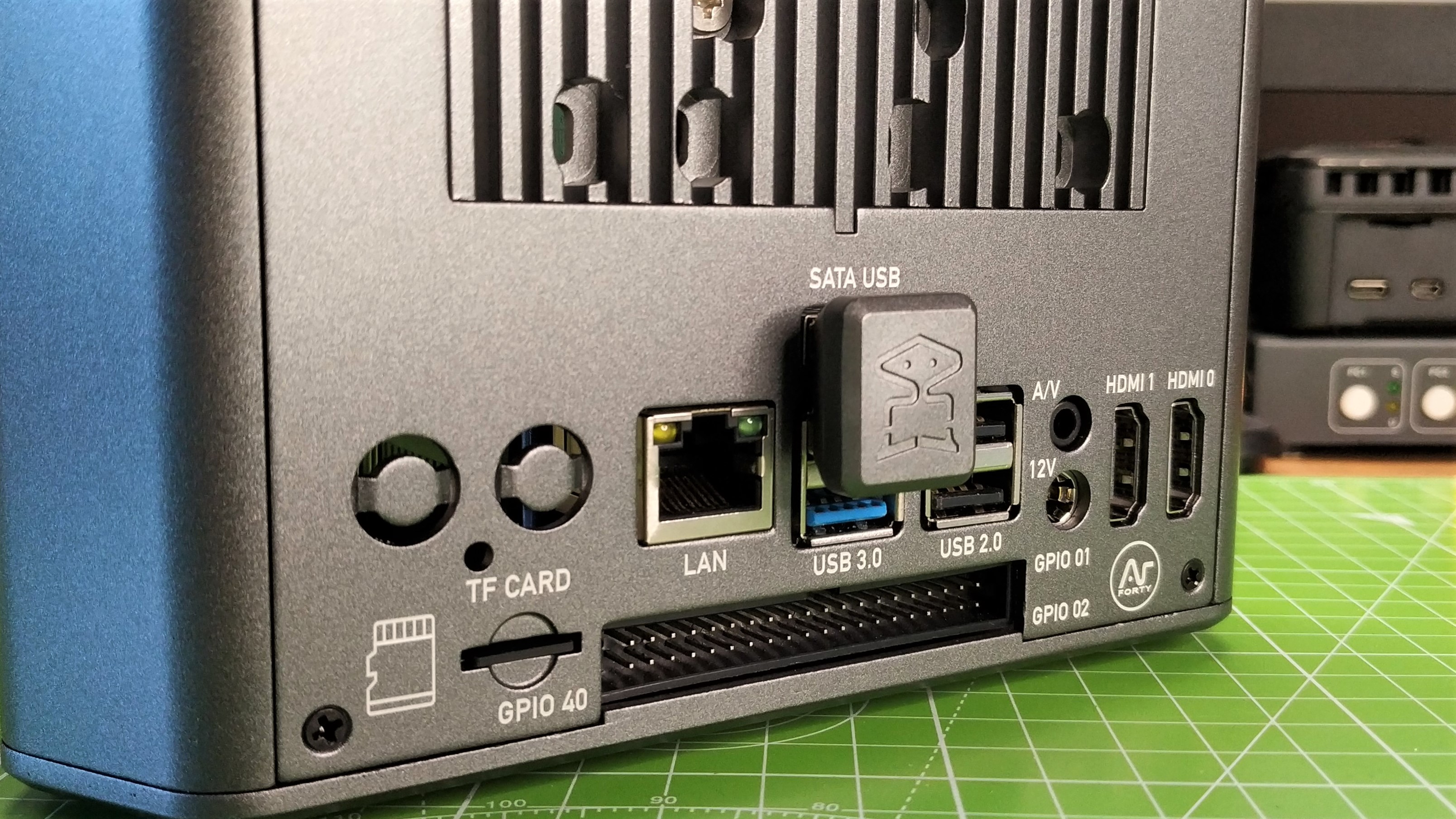
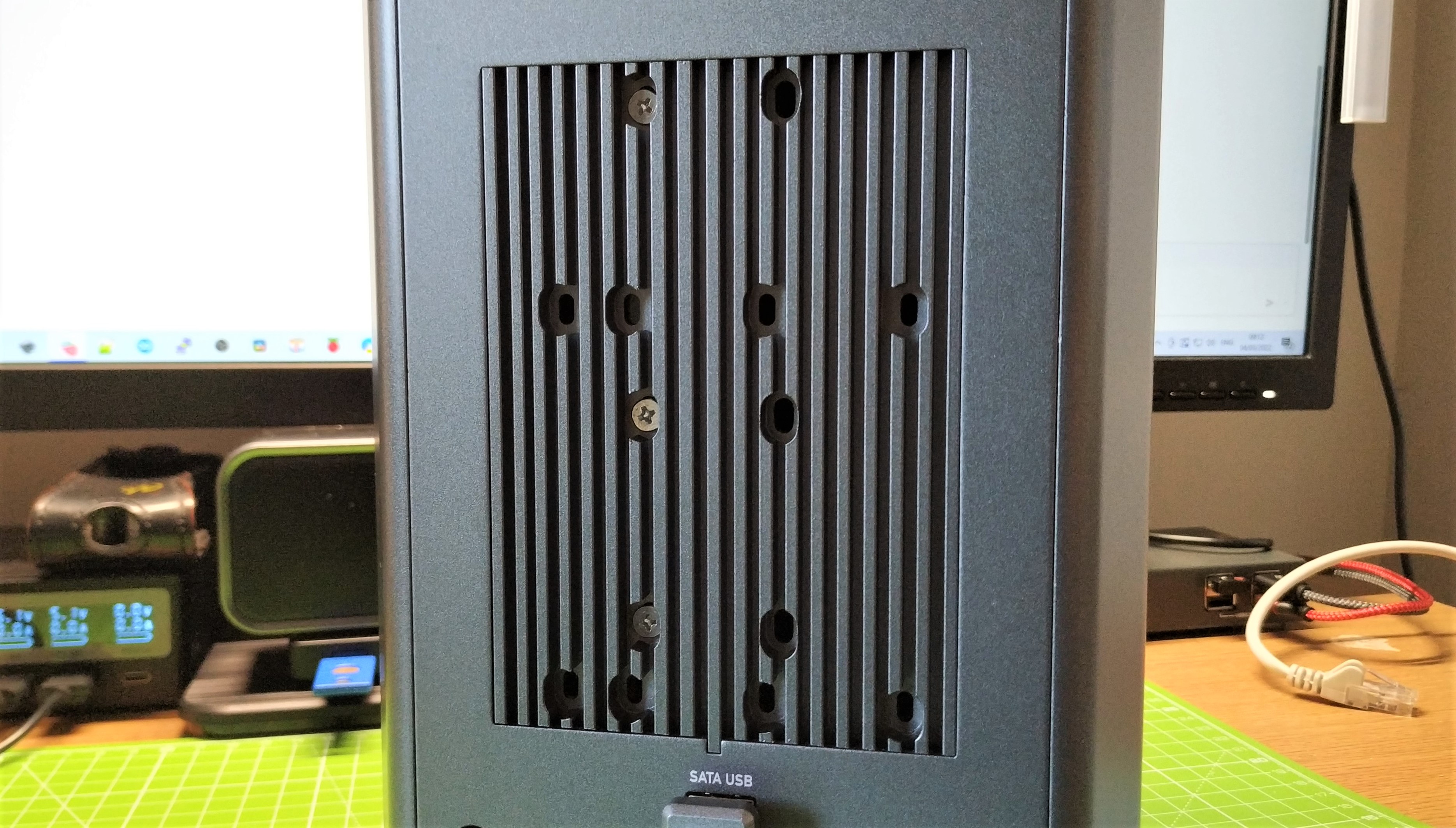
The back edge is where all the ports are located and we see placeholders for the Raspberry Pi 4’s USB, Ethernet and a cutout for the GPIO. Above the ports are a semi-hidden series of screw holes used to secure the SATA drives in place. When we say semi-hidden we mean that the panel can be removed; it is necessary to do so in order to insert the Raspberry Pi.



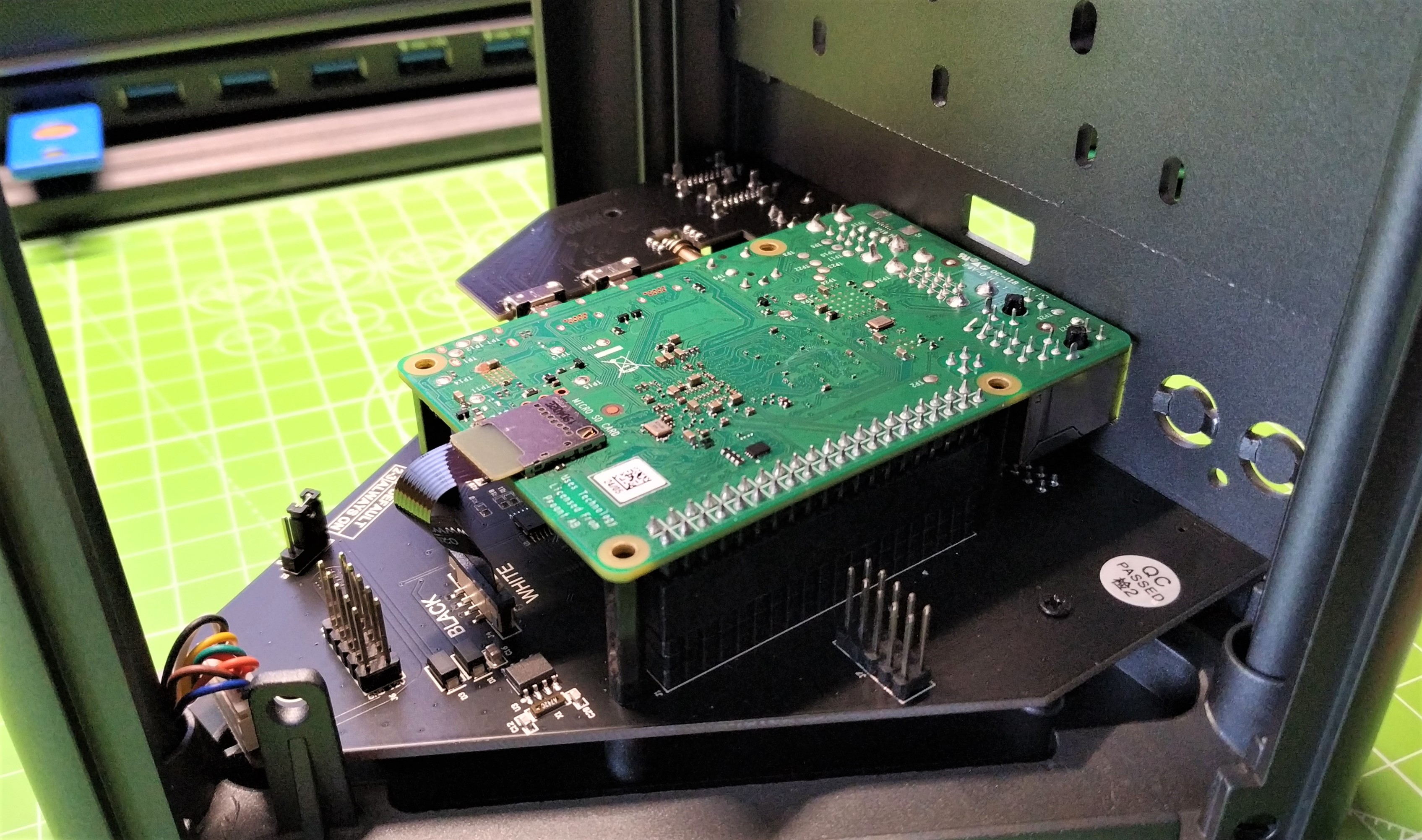
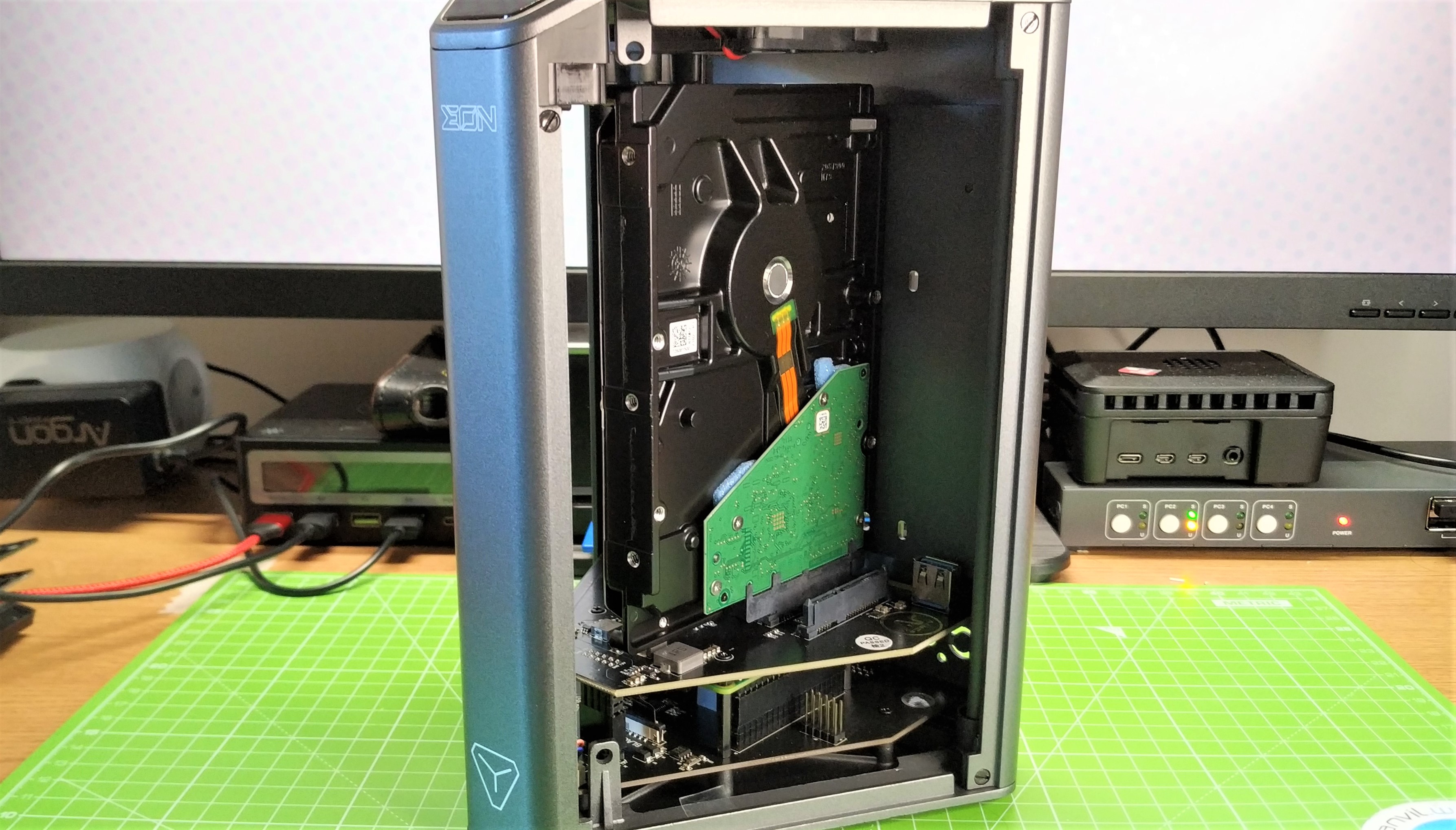
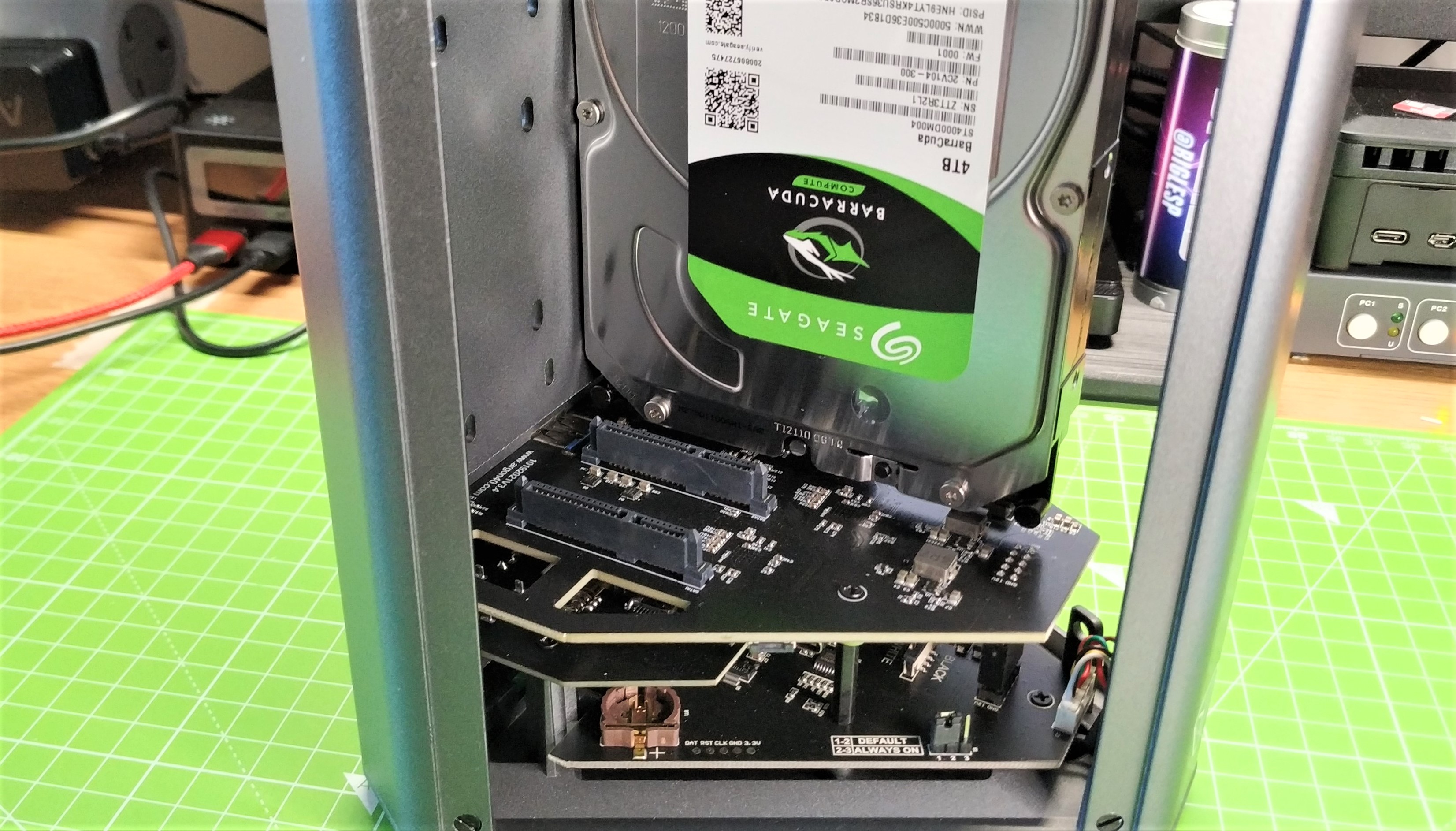
To get inside the Argon EON, we need to remove the two acrylic panels and then using the included screwdriver (something we have since coveted more so than our more expensive drivers) remove the back panel. Following the included instructions we removed three daughter boards. The top most board being a larger SATA to USB 3.0 board, similar in concept to those used on Argon’s ONE M.2. This SATA to USB 3.0 is powered by a VLI VL917 chip, and, while we can’t find a datasheet for this chip, we can make a firm assumption that this is a USB 3.0 to SATA bridge chip. The Raspberry Pi 4 has a VLI VL805 USB 3.0 controller so our assumption is based on evidence. Interestingly, this board has an extra, internal USB 3.0 which we can assume is used to connect an external USB drive. The lower board is where our inverted Raspberry Pi 4 is connected via the GPIO, providing GPIO access via the external port.
Get Tom's Hardware's best news and in-depth reviews, straight to your inbox.
A flexible microSD cable connects the slot on the Raspberry Pi 4 to an external microSD slot. Inserting the Raspberry Pi 4 requires us to connect a board for HDMI and composite audio/video. The board reminds us of those used in the Argon ONE and M.2. We also need to remove the external back cover before inserting the Raspberry Pi. Otherwise, it prevents the Pi from slotting into place. With the Pi installed, we then insert the SATA-to-USB 3.0 board, ensuring that the extended header near the front of the board connects to all of the pins. A few screws and we have the barebones built, but a NAS is nothing without drives. For the review we chose a low cost 3.5-inch, 4TB drive. We dropped the drive into a spare SATA port and secured it with the included screws. That’s it, we built a NAS.
For the software we followed Argon’s guidance and downloaded the latest Raspberry Pi OS, but we did deviate a little. First we updated the Pi 4’s bootloader to the latest version. Then we downloaded the latest Raspberry Pi Lite 64-bit OS. This gives us the fastest OS available and removes any need for a desktop OS, this NAS will live on our network serving files, not pushing pixels.
Remotely connecting via SSH, we installed the Argon EON helper script which provides an on / off switch, fan control, support for an IR receiver (not tested) and a real time clock. This script is very similar in feel to those used in the Argon ONE cases and it gives us granular control of the included case fan via the argon-config tool. To manage our NAS we installed Open Media Vault, as suggested by the instruction manual. The install process was easy and we managed to set up a drive as an SMB share with relative ease. As Open Media Vault is provided by a third party we will not review how it works. What we can say is that it works exceptionally well with the Argon EON and there are lots of tutorials to help set up your first NAS.
We moved on to testing the thermal properties of the Argon EON and, as we have a tall, open case with heatsinks and a 12V case fan, we felt assured that cooling would be good. We left the cooling at the default values and left the Argon EON to settle before running a stressberry test.
Our charts compare the temperatures of the Argon EON against the Argon ONE M.2 and a caseless Raspberry Pi 4. At idle the CPU reported 27.2 Celsius, well below the 40.9 Celsius of a typical Raspberry Pi 4 with no cooling. Under load, the max temperature reached was 39.4 Celsius, 1.5 Celsius lower than even the idle temperature of a Pi 4, and almost 30 Celsius lower than a Raspberry Pi 4 under load.
We ran the test again, this time with the Argon EON copying a 3.5GB Linux ISO image from our Windows 10 desktop. The idle temperature was 31.1 Celsius and under load the Pi reported a 41.8 Celsius max temperature. These temperatures are well under any thermal throttle points, which means if we wished, we could overclock the Raspberry Pi 4.The performance benefit this would give a simple file server is negligible but it can be done.
We tested network performance by copying a 3.5GB Linux ISO from our Windows 10 machine to the Argon EON via Ethernet. What limits the performance is the Raspberry Pi 4. Sure we have a choice of SSD or HDD SATA drives, but they all connect to the Raspberry Pi 4 via a single USB 3.0 interface. That said, the performance was decent. We clocked in at a maximum transfer speed of 111 MB/s which dropped to a minimum of 67.3 MB/s. These speeds are comparable to some of the best NAS enclosures.
Moving away from NAS functionality for a moment, we have a Raspberry Pi 4 and this board is well known for the GPIO and Argon have provided a breakout on the rear of the unit. Any GPIO projects will need a breakout board such as Cytron’s Maker HAT Base. We plugged in a Pimoroni mini black hat hack3r breakout board, and attached an Explorer HAT Pro, one of the best Raspberry Pi HATs. The install process worked with no issues but running the Python test script caused the Argon EON to lock up. When we then powered down the unit and rebooted, we were met with total silence: no fans or lights going. However, after we removed the Explorer HAT Pro from the breakout board, the system powered up as normal.
It seems that there could be a pin conflict between the Argon EON and the Explorer HAT Pro. This issue is moot, though. How many of us will plan to add a HAT to our NAS? Our bet is not many.
Use Cases for the Argon EON
Quite simply this is a NAS and, as such, the majority of people will gravitate towards buying the Argon EON for this role. But with space for up to four SSDs, USB booting, excellent cooling and support for the Raspberry Pi 4 we have an excellent, if expensive case.
GPIO users, yes you can use this case for projects but the sheer size and rather awkward access to the GPIO makes this far from ideal. If you want fast storage and good cooling along with GPIO access try Argon ONE M.2 instead.
Argon EON is first and foremost a stunning looking NAS device that feels at home in our office. The ease at which we can add drives, the sheer lack of wires and the OLED display add a level of refinement to our DIY NAS build.
Bottom Line
Space grade aluminum, cyberpunk looks and plenty of storage options make the Argon EON the ideal choice for Raspberry Pi 4-powered NAS solutions. You can already buy a ready-to-go NAS enclosure, but the Argon EON still comes in cheaper than Synology’s DS220+ 2 Bay NAS Enclosure which retails for $386.
Argon EON will be around $150, add around $80 for a 4GB Raspberry Pi 4 and a 4TB drive for $93 and we hit $323, a saving of $63 over just the Synology enclosure. Adding the same drive to the Synology setup and we save $156 by building our own with the Argon EON.

Les Pounder is an associate editor at Tom's Hardware. He is a creative technologist and for seven years has created projects to educate and inspire minds both young and old. He has worked with the Raspberry Pi Foundation to write and deliver their teacher training program "Picademy".
-
rdl03 I was one of the Kickstarter backers, so I've had the device for about a month. I'm generally quite pleased, but I do disagree with the author of the review about the ease of use of OpenMediaVault.Reply
Even as an experienced software engineer, and having set up and used a different NAS before, I still spent a couple hours hunting for documentation, tutorials, and trial and error before successfully connecting my Ubuntu box and Rasp Pi running Volumio to the NAS.
I think Argon should have done more in terms of providing a "roadmap" in terms of links to documentation and tutorials to help new users get the software set up. -
eye4bear The article did not mention if this set up is able to do RAID 1 ? I want to put in 2 disks and have them mirror each other and if it can't, I will look elsewhere.Reply -
LordConrad Much better to save up for the Synology. Using more than a single drive on the Argon NEO will slow down performance thanks to the single USB 3 SATA connection. Also, the software on Synology devices is the easiest and most intuitive in the industry. I did a lot of research before I decided to buy my Synology NAS. A few months ago I upgraded my DS418play to a DS1621xs+, best money I ever spent.Reply -
Djeay Clayton ReplyLordConrad said:Much better to save up for the Synology. Using more than a single drive on the Argon NEO will slow down performance thanks to the single USB 3 SATA connection. Also, the software on Synology devices is the easiest and most intuitive in the industry. I did a lot of research before I decided to buy my Synology NAS. A few months ago I upgraded my DS418play to a DS1621xs+, best money I ever spent.
I used to be a big fan of Synology, until I learned what kind of clothes the emperor was (not) wearing.
I wasn't so thrilled that the multiple Synology devices that I purchased stopped becoming eligible for firmware updates, effectively leaving me with devices that became less and less useful over time. That, combined with Synology's quirky operating system, limited UI functionality, and downright exacerbating technical support steered me to QNAP, where I've not had any regrets since.
